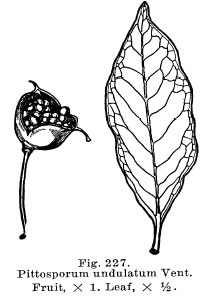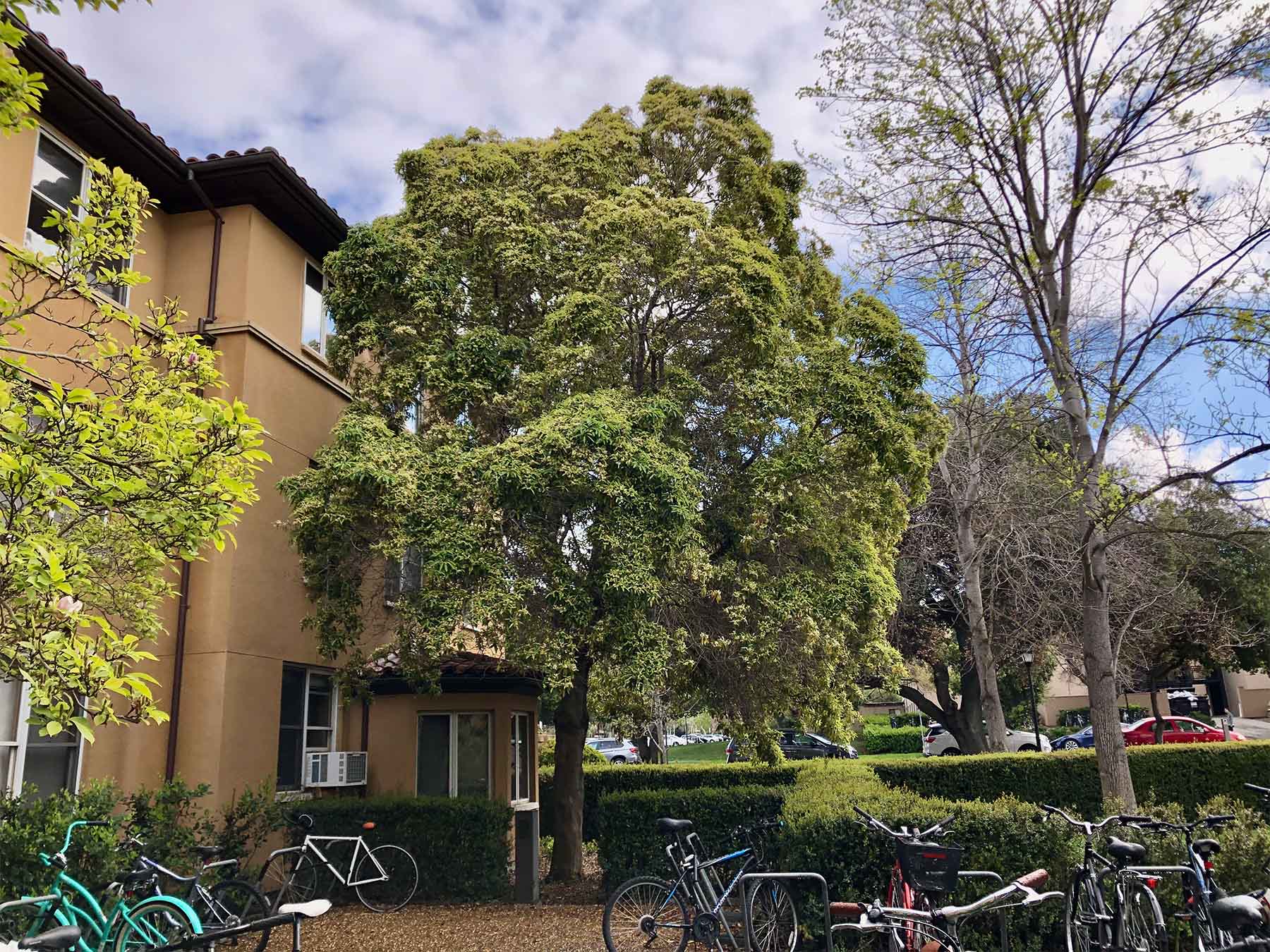Pittosporum undulatum
 Victorian box
Victorian box

This attractive small tree is distinguished by a very pleasant fragrance in spring, somewhat resembling orange blossom and not unlike daphne. The white ½-inch flowers are followed by yellow-orange marble-sized fruit that open to display orange seeds. As with other species of pittosporum, the seeds are supplied with mucilage that causes them to stick to birds, thus aiding their dispersal. The glossy 4- to 6-inch leaves, paler underneath, have undulating edges that are not exactly the same as tarata leaves (which come with black twigs) but the difference is more easily seen than written; see three in line with a tarata north of Inner Quad Buildings 100 and 110 for convenient comparison.
Several specimens of Victorian box grow on both sides of Wilbur Hall’s main entrance off Escondido Road. Campus’s fullest-canopied specimen is on the right side of the front courtyard of Kimball Hall. There is a tall one on the east side of the church, within 4 feet of the masonry, surely planted by a bird. Another is across the pathway from it. Other tall specimens grow in planters in the pedestrian areas of the Stanford Shopping Center.
Sometimes grown as a hedge, if left to become a tree it forms a charming dome-shaped canopy, even if resprouting from a stump. Most older specimens become rangy, and are let stand presumably for their exquisite perfume in spring, with sometimes a repeat performance in the summer.
It is sometimes called mock orange, as are several unrelated shrubs, so it is best to stick with the name Victorian box, a reference to one of its Australian states of origin and to boxwood hedges.
Name derivation: Pittosporum – Greek pitta (pitch) and spora (seed), referring to the sticky seed coating; undulatum – wavy-edged (leaves).
About this Entry: The main text of this entry is from the book Trees of Stanford and Environs, by Ronald Bracewell, published 2005. Kimball specimen added; light edits; all locations now up to date (Mar 2022, SP). Additional locations added, Art Gallery reference removed, additional notes on canopy and decline (Feb 2024, SP).




